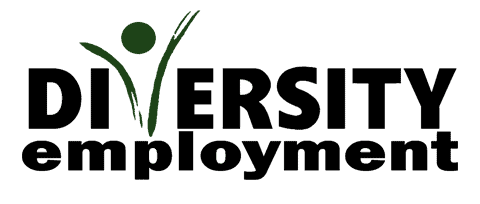
Remote Work: Working Together as a Team Despite Distance
Introduction
Welcome to the world of remote work, where opportunities abound and the traditional office walls no longer define your workplace. Thriving in remote work environments is crucial for career success. This guide is for ambitious entry-level job seekers pursuing a successful career in a digital and diverse workplace.
The transition to remote work has expanded job opportunities and promoted inclusivity. Furthermore, it has catalyzed the creation of supportive work environments where diversity is celebrated, and every individual’s contribution is valued. This guide is to help job seekers and workers succeed in today’s professional landscape.
From tackling communication barriers and leveraging technology for collaboration to nurturing a culture of inclusion and productivity, we’ll walk you through everything you need to know about making the most of remote work opportunities. So, let’s embark on this journey together, equip you with the knowledge and tools to seize those inclusive, supportive opportunities, and set the stage for a rewarding and fulfilling career.
Understanding Remote Work Challenges
The transition to remote work has reshaped the professional landscape, offering a range of accessible career paths and introducing unique hurdles for team collaboration and inclusion. Addressing these challenges is critical to fostering productive and supportive work environments, ensuring everyone can contribute effectively regardless of background or location.
Embracing Diversity in Remote Teams
Remote work brings together individuals from various cultural backgrounds and time zones, offering a unique meld of perspectives that can enrich a team’s output. However, this diversity also requires understanding and respecting differences in communication styles, work ethics, and cultural sensibilities.
Creating an environment that values these differences enables teams to harness the full potential of their collective diversity, leading to innovative solutions and enhanced problem-solving capabilities.
Breaking Down Communication Barriers
Without the advantages of face-to-face interactions, remote teams must overcome the inherent limitations of digital communication. This means establishing clear communication channels, consistent check-ins, and transparent protocols.
Doing so mitigates misunderstandings and fosters a culture of openness and collaboration, essential to successful remote work dynamics.
Understanding and addressing the unique challenges of remote work is the first step toward creating inclusive and supportive opportunities for everyone. Remote teams can achieve unprecedented success by adopting a culture that embraces diversity and ensures effective communication.
Technology’s Role in Remote Collaboration
At the heart of practical remote work lies the strategic use of technology. It bridges gaps, facilitates communication, and supports the daily operations of distributed teams. Embracing the right technological tools is essential for cultivating an environment where every team member feels included and valued regardless of location.
Selecting Tools for Team Collaboration
Choosing the appropriate technological solutions is critical for enhancing collaborative efforts. Teams should focus on finding platforms that facilitate seamless communication, allow for efficient project management, and enable file sharing and real-time collaboration.
Tools such as Slack for messaging, Asana for project management, and Zoom for video conferencing stand out for their ability to support the dynamic needs of remote teams.
Optimizing Workflows with Digital Tools
However, incorporating technology into remote work goes beyond adopting digital tools. It includes setting clear guidelines for tool usage, defining roles and responsibilities within these platforms, and creating streamlined workflows that align with team objectives.
These steps ensure that technology facilitates, rather than complicates, team collaboration and productivity. Using technology wisely, remote teams can overcome distance barriers, enhance their workflows, and maintain an inclusive and supportive atmosphere.
Ultimately, the thoughtful application of technology is crucial for bridging the gap between diverse team members, allowing for seamless collaboration, for example, in Artificial Intelligence and Diversity.
Cultivating a Supportive Remote Culture
The fabric of a solid remote team lies in their ability to communicate or utilize technology and their shared sense of trust, openness, and inclusivity. Building a supportive remote culture ensures all team members feel valued and understood, promoting a sense of belonging and enhancing overall productivity.
Building Trust and Openness
Trust is the cornerstone of any successful remote team. Fostering trust in a remote setting involves regular, transparent communication, setting clear expectations, and encouraging team members to share ideas and concerns.
By nurturing an environment where team members feel secure in expressing themselves, teams can create a solid foundation of trust that supports collaboration and innovation.
Championing Inclusive and Supportive Work Environments
Inclusion is vital for leveraging the full potential of a diverse team. Creating an inclusive culture means actively promoting diversity and understanding, providing equal opportunities for participation and growth, and recognizing and valuing each member’s unique contributions.
This approach boosts morale and drives creativity and problem-solving, leading to more successful outcomes. Additionally, understanding the challenges students and professionals face can help tailor support systems that foster a truly inclusive workplace.
A supportive remote culture ultimately values transparency and trust, enabling every team member to thrive regardless of location. By focusing on these aspects, companies can ensure that their remote teams work together and grow in an environment that champions inclusive, supportive opportunities.
Strategies for Effective Remote Communication
Communication stands as a pivotal force in the dynamics of remote work. Effective communication strategies ensure that all team members are aligned, informed, and engaged, regardless of location or time zone. Implementing structured communication practices can significantly enhance team cohesion and efficiency.
Structuring Productive Meetings
Meetings are essential for keeping remote teams on track but can become time sinks without a clear structure. To make meetings more effective, set a clear agenda beforehand, allocate specific times for each topic of discussion, encourage participation from all members, and summarize critical takeaways and action items at the end.
This approach ensures that meetings are time-efficient and inclusive, giving everyone a voice and strengthening the team’s collaborative spirit.
The Importance of Asynchronous Communication
Given the global nature of many remote teams, asynchronous communication becomes a cornerstone of effective collaboration. It allows flexible working hours by accommodating different time zones, thoughtful responses as team members can take their time to reply, and Continuous workflow without waiting for immediate responses.
Tools like Trello for task management, and Slack for threaded discussions, support asynchronous communication, ensuring team members can effectively collaborate at times that work best for them.
Adopting these strategies optimizes communication within remote teams and promotes an understanding and respect for each member’s time and contributions. This, in turn, fosters a more inclusive and supportive remote work environment, aligning with diverse employment strategies that cater to workers from all walks of life.
Enhancing Individual Productivity
Successful remote work depends on effective team collaboration and each individual’s ability to manage their workload efficiently. Enhancing personal productivity is crucial for remote workers to balance their professional responsibilities with personal well-being.
Mastering Time Management
Good time management is essential for remote workers to maximize productivity. Key strategies include prioritizing tasks based on urgency and importance, breaking down larger projects into manageable tasks, using time-tracking tools to monitor where time is spent, as well as allocating specific blocks for focused work.
By mastering these time management techniques, remote workers can ensure they meet their deadlines while maintaining a healthy work-life balance.
Designing a Distraction-Free Workspace
The work environment plays a significant role in an individual’s productivity. To create a conducive workspace, choose a quiet, dedicated area for work. Minimize distractions by keeping the workspace organized and clutter-free. Ensure proper lighting and comfortable seating. Make sure to personalize the space to boost motivation and creativity.
Creating a distraction-free workspace helps remote workers stay focused and efficient, contributing positively to their team’s productivity.
By enhancing personal productivity through effective time management and a well-organized work environment, remote workers can contribute more effectively to their teams. This leads to better outcomes for projects and supports a healthier and more balanced approach to remote work, reflecting the values of inclusive and supportive opportunities.
Integrating Inclusive Supportive Opportunities in Remote Settings
Integrating inclusive and supportive opportunities into remote work environments is crucial for building diverse and dynamic teams. This approach enriches the team’s collective skill set and fosters a culture of mutual respect and understanding where every member feels valued and motivated.
Accessible Career Paths for Diverse Talents
Creating accessible career paths involves offering flexible work arrangements to accommodate different needs, implementing diversity and inclusion training for all team members, actively seeking to hire from a diverse talent pool, and providing mentorship programs to support career development.
By prioritizing accessibility, companies can attract a broader range of talents, benefiting from their diverse perspectives and experiences.
Leveraging Diversity Employment Strategies via Technology
Technology plays a pivotal role in facilitating inclusive, supportive opportunities. AI and data analytics can be used to remove biases in hiring. Collaborative tools can enable equal participation. Online training can support continuous learning. And finally, digital platforms should be accessible to people with disabilities.
Remote teams can thrive by adopting strategies that leverage the strengths of each team member and respect diversity. This enhances team cohesion and positions companies better to address the needs of a global market.
Lastly, organizations can establish a strong, productive, and genuinely inclusive culture by integrating inclusive and supportive opportunities into remote work settings. This fosters innovation and creativity, leading to better solutions and a competitive edge in today’s diverse marketplace.
FAQ’s
How do remote teams overcome time zone challenges?
Remote teams can overcome time zone differences by scheduling meetings during overlapping work hours, using asynchronous communication for non-urgent matters, and rotating meeting times to share the inconvenience.
What can individuals do to feel more connected in a remote team?
To feel more connected, remote workers can participate actively in team meetings and discussions, engage in virtual team-building activities, and share personal updates or achievements with the team.
How can leaders ensure their remote teams are productive?
Leaders can enhance their teams’ productivity by setting clear goals and expectations, providing the necessary tools and resources, and offering regular feedback and recognition.
Can remote work be as practical as in-office work?
When managed effectively, remote work can be as productive, if not more, than traditional office settings. Key factors include communication, technology use, and team culture.
What strategies can companies use to promote diversity in remote teams?
To promote diversity, companies should implement bias-free recruitment practices, foster an inclusive work culture that values diversity, and provide diversity and inclusion training for all employees.
What are the best practices for maintaining work-life balance in a remote setting?
Maintaining a healthy work-life balance in a remote setting requires establishing a routine that clearly defines work and personal time, creating a designated workspace separate from individual areas, taking regular breaks, and respecting end-of-work-day boundaries.
How do you build rapport among team members in a virtual environment?
Building rapport in a virtual team can be achieved by scheduling regular virtual team-building activities, encouraging informal virtual meetups and coffee chats, and sharing personal stories and milestones to foster connections.
Can remote work impact team performance positively?
Yes, remote work can positively impact team performance by reducing commute times and related stress, increasing overall well-being, providing flexibility, boosting productivity and creativity, and allowing access to a broader talent pool.
What tools can help manage remote teams effectively?
Various tools can support the effective management of remote team communication, like Slack and Zoom, project management, such as Trello and Asana, and time management, with tools like Time Doctor and Toggle.
How important is feedback in a remote work setting?
Feedback is crucial in remote settings to ensure team members understand their contributions and areas for improvement. As well as maintain a sense of connection and engagement with the team. Listening to feedback will nurture a culture of continuous improvement and growth
Conclusion
The transition to remote work has accelerated a shift towards more inclusive and supportive work environments. Successfully navigating this shift requires embracing diversity, leveraging technology, and cultivating a culture that champions every individual’s contributions. By implementing these strategies, organizations enhance productivity and innovation and create spaces where employees from all backgrounds can thrive.
Diversity is a strength that drives better outcomes and creates more creative work environments. Remote work breaks down barriers but requires inclusive support and accessible career paths.
If you’re seeking a workplace where diversity is celebrated and everyone has the opportunity to succeed, Join Diversity Employment and join a supportive community that values diverse perspectives. Let’s redefine remote work for a more inclusive workplace.












